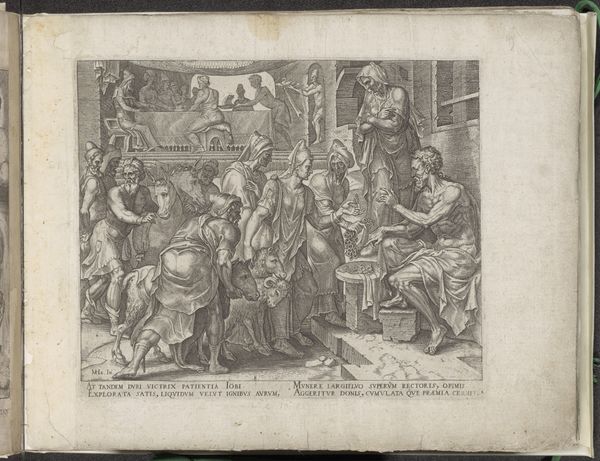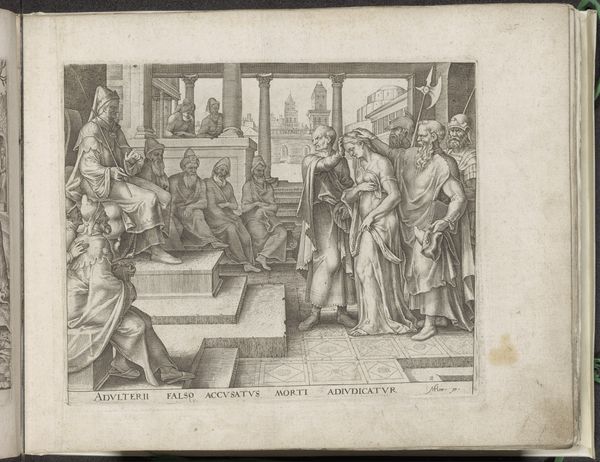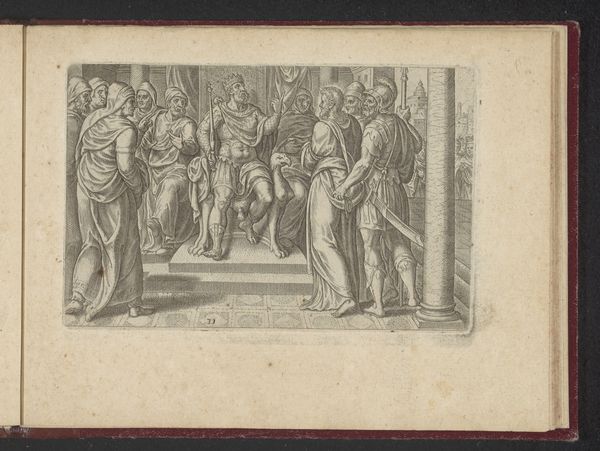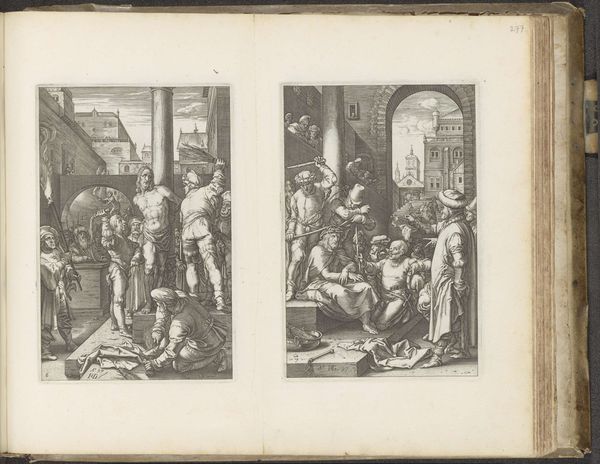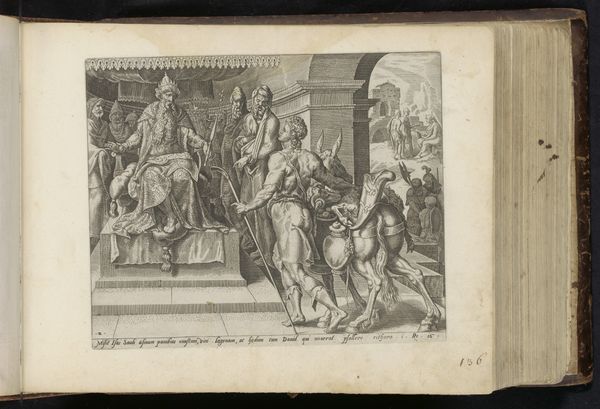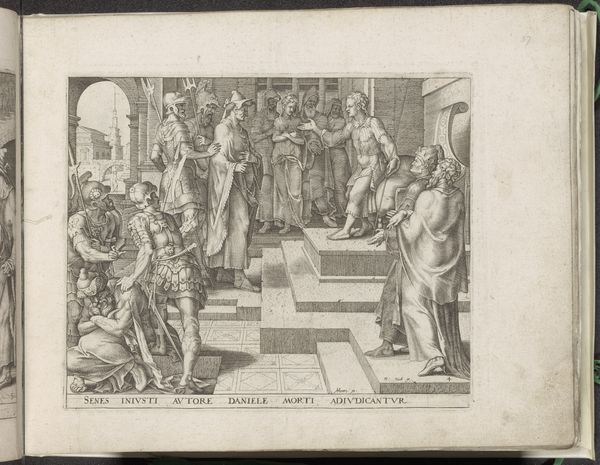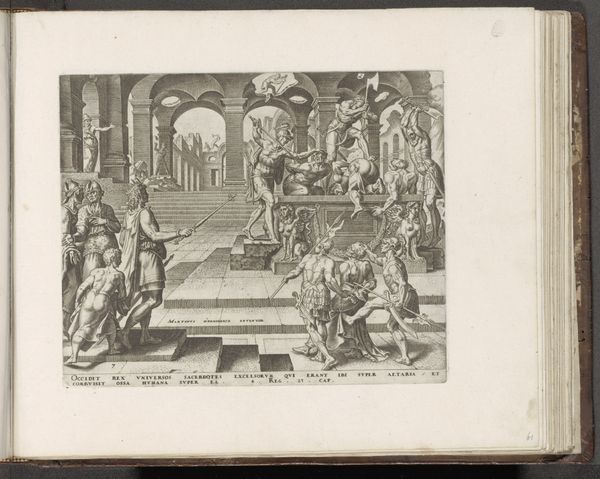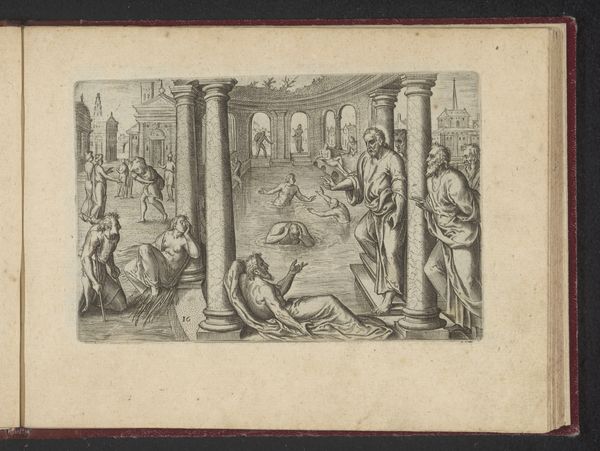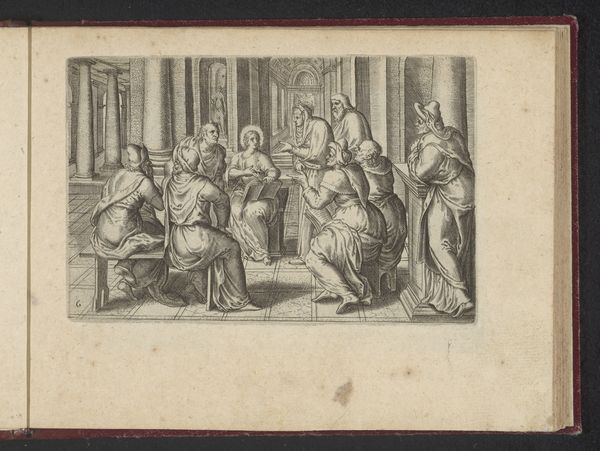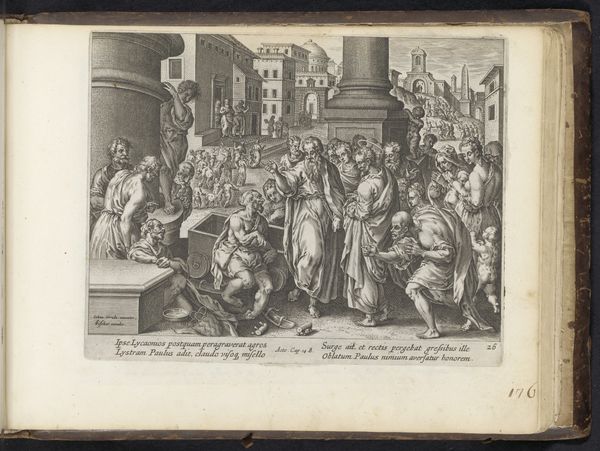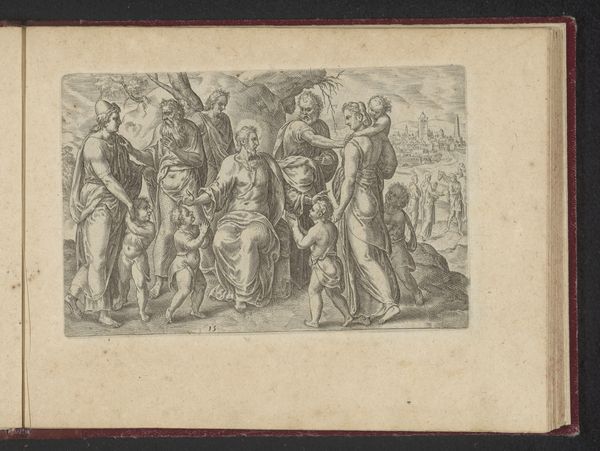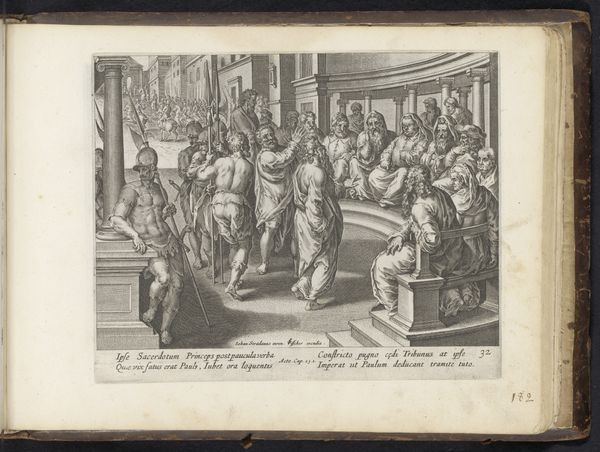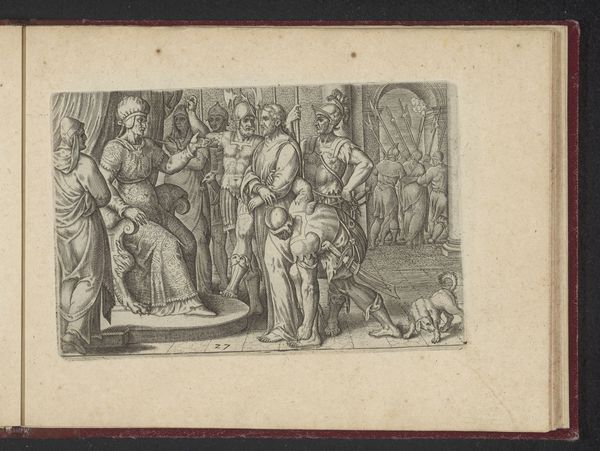
print, engraving
# print
#
mannerism
#
figuration
#
history-painting
#
engraving
Dimensions: height 210 mm, width 260 mm
Copyright: Rijks Museum: Open Domain
This print, 'Christ Healing the Paralytic,' was made by Wierix around the turn of the 17th century. It's an engraving, meaning the artist would have used a tool called a burin to cut lines into a copper plate, which then held ink and could be printed onto paper. What I find fascinating here is the directness of this process. The quality of line is everything; it defines the light and shadow, and even the emotional intensity of the scene. Look closely, and you'll notice how Wierix varies the thickness and density of the lines to create a sense of depth and volume. This wasn't just a technical exercise. Engravings like this played a crucial role in disseminating religious imagery, in a world before mass media. Each print represents hours of skilled labor. That labor, and the relative ease of circulating these images, made them powerful tools for spreading ideas. So, when you look at this print, you're seeing not just an artwork, but a potent artifact of its time, reflecting both devotional practices and the burgeoning culture of print.
Comments
No comments
Be the first to comment and join the conversation on the ultimate creative platform.
